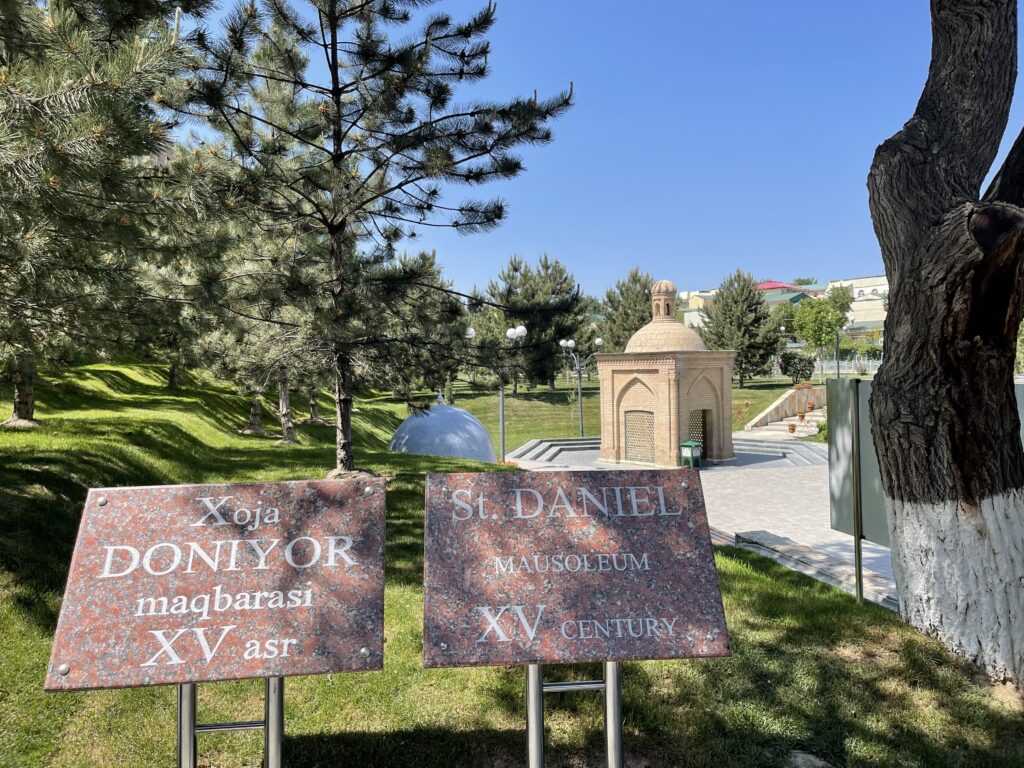While Samarkand boasts famous sites like Registan Square and Bibi-Khanym Mosque, there is one place of profound religious significance and breathtaking beauty that often escapes the limelight – the Mausoleum of Saint Daniel.
Though lesser-visited, the Mausoleum of Saint Daniel holds a unique place in the hearts of believers from three of the world’s major religions: Islam, Christianity, and Judaism.
Here, the veneration of Saint Daniel transcends religious boundaries, drawing in pilgrims seeking blessings and solace from far and wide.
Beyond its religious significance, this sacred site offers a serene and picturesque ambiance that enchants every visitor. Perched on a high hill, overlooking the tranquil Siab River, the mausoleum stands as a testament to the ancient city’s rich heritage and storied past.
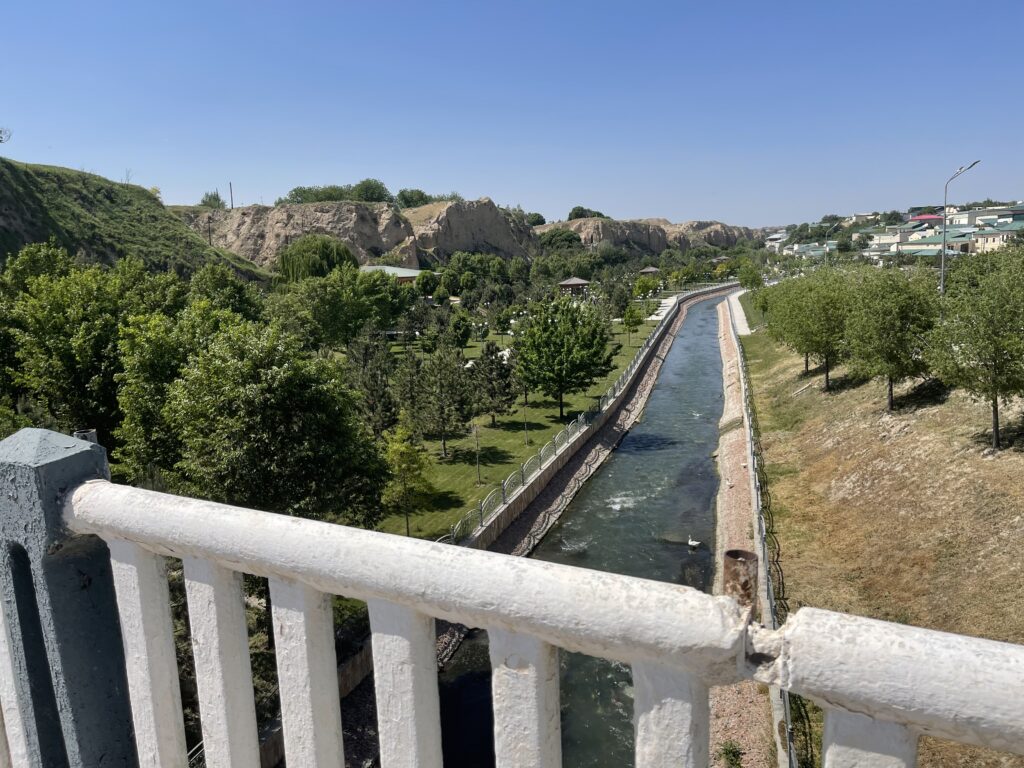
Who was the Prophet Daniel?
The Mausoleum of Saint Daniel in Samarkand holds great significance for followers of three major world religions: Islam, Christianity, and Judaism. Known locally as Khoja Daniyar, he was revered as a prophesier, interpreter of dreams, and advisor to Babylonian and Persian rulers.
Born in Jerusalem, Daniel displayed remarkable wisdom from a young age and served as a court dignitary under Nebuchadnezzar. His prophetic insights into the future of empires and the coming of Jesus Christ further solidified his fame. He went on to serve under various rulers, including King Darius and Cyrus the Great, before finally settling in Susa, Iran, where he passed away and was buried.
The Mysteries and Legends Behind the Mausoleum of Saint Daniel
The Mausoleum of Saint Daniel in Samarkand is not only a place of revered significance but also a site that has sparked intriguing debates about the identity of the person buried within its hallowed walls. Throughout history, various legends and beliefs have emerged, presenting differing views on whose remains rest in this sacred tomb.
The prevailing belief holds that the mausoleum houses the relics of Saint Daniel, the biblical figure, named above. This belief, however, is a matter of controversy. Besides Uzbekistan, several other countries also lay claim to the remains of the prophet. Iran, Iraq, Turkey, and Morocco are home to tombs and shrines that assert themselves to be his final resting place.
Another perspective points to the tomb being the resting place of Prophet Tabba, whose significance is recorded in the “Kandia Minor.” According to this narrative, a prophet of God crossed the Jeyhun River (Amu Darya) and arrived in Samarkand, where he gained great respect. He settled there, passed away, and was known as Prophet Tabba. These accounts attribute profound spiritual experiences and revelations to the presence of his remains.
Contrary to the above, yet another legend identifies the tomb as belonging to Daniyol, an associate of Kussama ibn Abbas, the cousin of the Prophet Muhammad. Arab historian Abu Tohir Hoja mentions this version in his work “Samaria.” According to this narrative, Daniyol arrived in Samarkand with Kussama ibn Abbas to propagate Islam, and his presence was highly respected by the people of the city.
The ambiguity surrounding the identity of the remains has led to fascinating debates and interpretations among scholars and followers alike. Each belief carries its own historical significance and spiritual reverence, making the mausoleum a place where diverse faiths converge in unity.
Visiting the Tomb of St. Daniel
The tomb is located just outside of Samarkand city center, behind the archaeological site Afrasiyab Settlement. To reach the tomb you pass through Saint Daniel Square, a small but beautiful green area lined with trees, street lamps and sheltered benches.
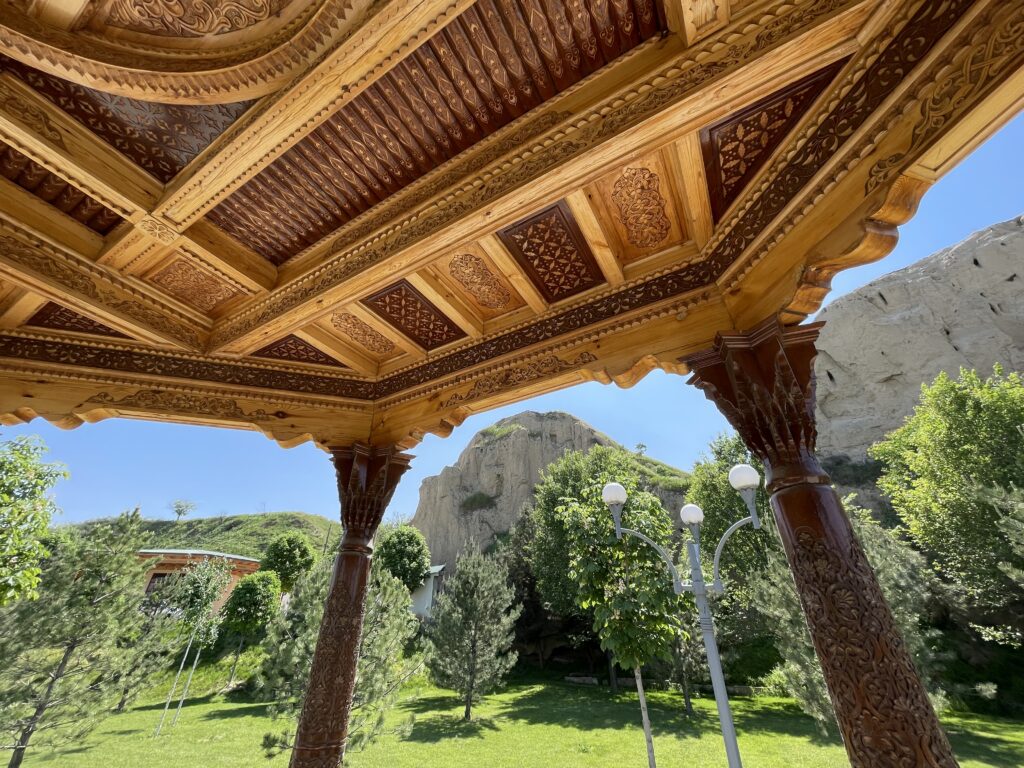
In the background are the steep hillsides overlooking the Siab river. The site of the tomb is worth a visit for its beauty alone.
Over time, the mausoleum has undergone several reconstructions and extensions by devout mullahs, leading to the current building with its distinctive chain of five low domes.
Climbing up a number of steps to reach the peak, visitors reach the tomb itself, an 18 meter casket lined with dark green textile and Arabic scripture. The reason for the length of the tomb is also subject to debate.
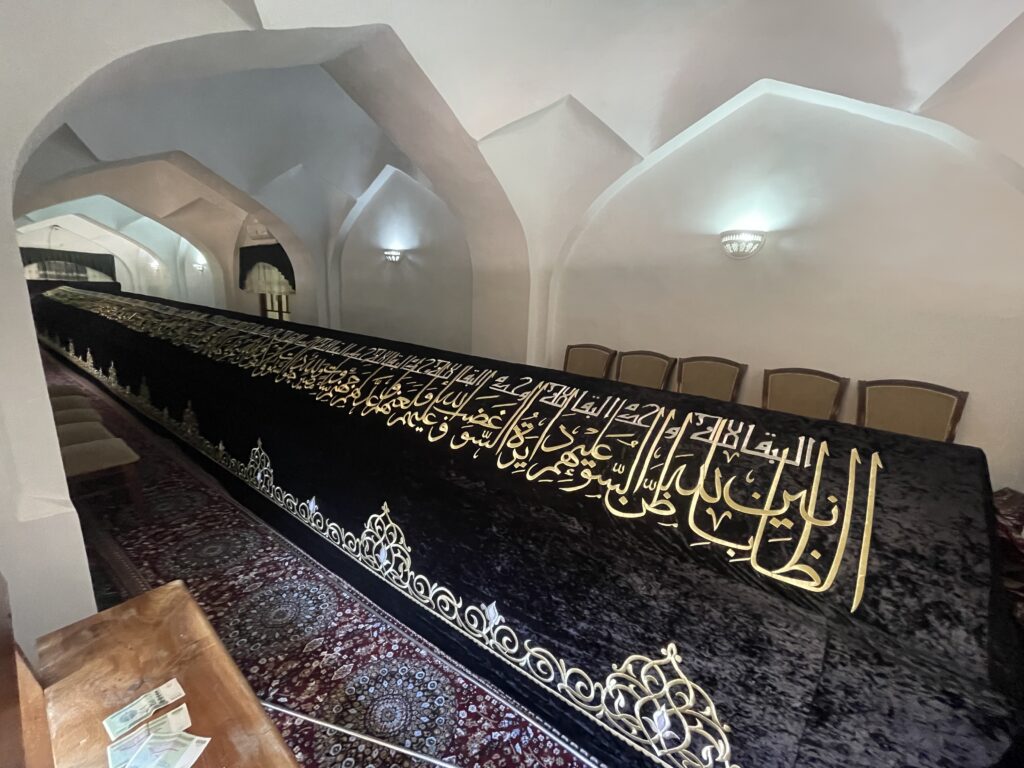
The mausoleum’s unique features and its connection to the great biblical figure, regardless of the religious denomination, make it a fascinating and sacred place in the heart of Samarkand.
Having personally visited this tomb twice, I can confirm its attraction as both a revered religious site and a haven of serenity and beauty. The short trip outside of the city center is truly worthwhile.
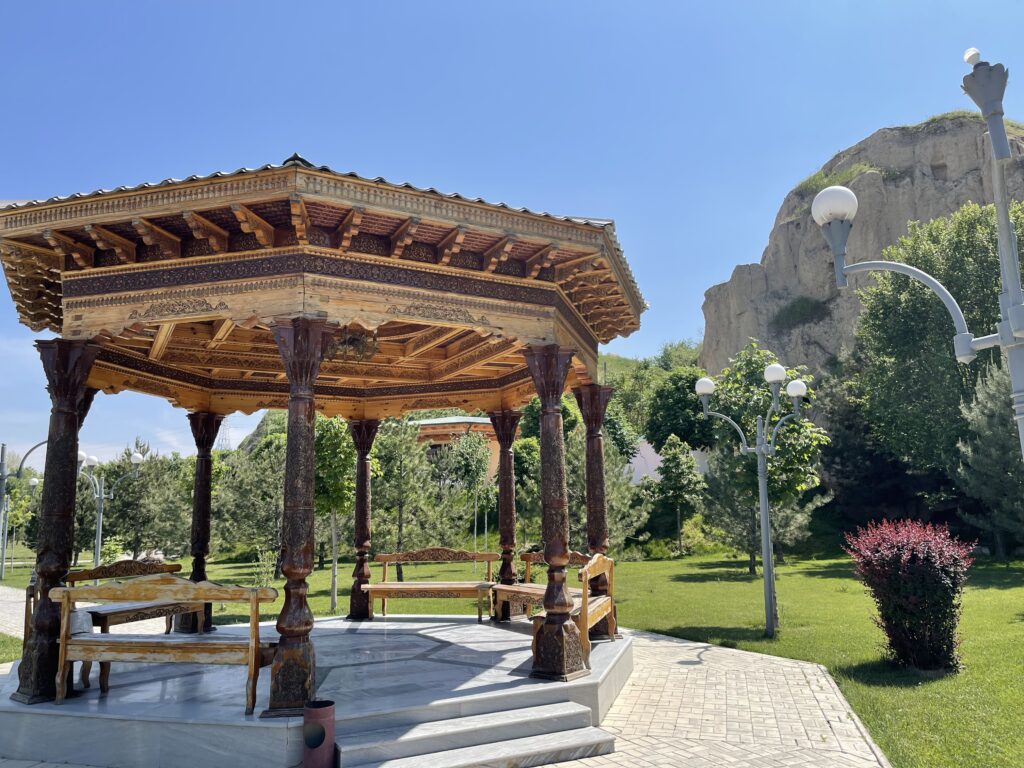
Related Post: Best Things to do in Samarkand
In conclusion, the Mausoleum of Saint Daniel in Samarkand stands as a testament to the enduring reverence for a biblical figure revered by Muslims, Christians, and Jews alike.
The stories surrounding its origin and the ongoing mystery of its relics only add to the aura of this revered site. Visitors continue to seek blessings, healing, and prosperity while paying homage to the timeless legacy of Saint Daniel.
If you’re planning a trip to Samarkand read our post on the best tourist areas to stay in Samarkand.
